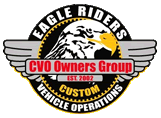I agree

The OEM relief valve has a very low cracking pressure, wide span between full relief.
Google relief valve cracking pressure for an explanation. They were not intended to be a very precision hydraulic component. Line up a half dozen springs and you will see what I mean, the free lengths vary radically. I often wonder if the lack of precision was just the MOCO design tolerances because they planned for the seats to leak, part of the low cracking pressure.
Well good news is there are improvements we can make to tighten that up. I use Feulings tester to check all of them.
When checking them, were should I draw the line as to whether the relief valve is performing well or improvements should be made before installation? I don't want to chase this down the rabbit hole... but at the same time I want to install a properly functioning part (I probably should have bought a Fueling plate and pump)
When using the Feuling tester, I liberally oil the relief valve components before install and then slowly increase the pressure while monitoring for leaks.
With the stock plunger installed, I could feel/hear a small amount of air escaping out the feed port starting at about 13-15 psi. I assume this was point the valve reached its cracking pressure. Below that PSI, no air escaped. As I continued to increase the pressure, the amount of air being bypassed seemed to increase proportionately. I never really perceived what I would delineated as a clear pop off.
With the Axtell ByPass installed, by the time I had reach 3-4 PSI, air was escaping through both the feed port and the pressure relief valve passage. This indicated to me that air was making it past the cartridge seat and passing between the cartridge and the relief valve bore since the return to the feed port is supposed to be blocked by the cartridge.
I don't know if this was a result of the cartridge having a bad seat, its fit with the bore, or the strength of the spring or combination of all.
The only thing keeping the cartridge stack fully seated if there is any measurable space between the roll pin and cartridge stack is the small spring between the cap and valve riding inside the cartridge within the stack. I have .001 to .002 space between my roll pin and stack.
As I continued to increase pressure, the leaking from both the feed port and relief valve passage continued to increase without much of a perceived difference between the two.
At around 8 PSI that amount of air escaping out the pressure relief valve passage started to become more pronounced (I assume this is the point at which the valve inside the cartridge had reached its cracking pressure).
Continuing to Increasing pressure from this point steadily increased the amount of air escaping from both holes (although significantly more was escaping though the relief valve passage than through the feed port.
I'm hoping that the replacement Axtell kit being shipping to me will perform better.
 Author
Topic: Lapping Oil Bypass to Stop Leaking (Read 8347 times)
Author
Topic: Lapping Oil Bypass to Stop Leaking (Read 8347 times)

